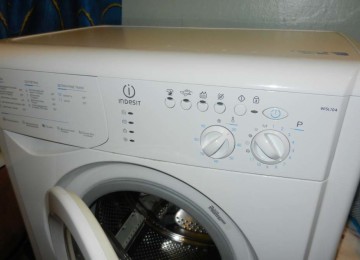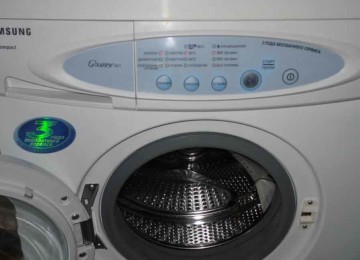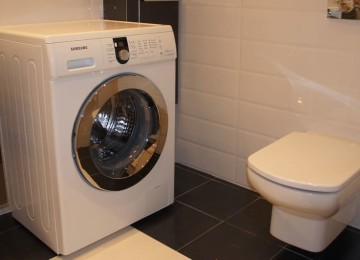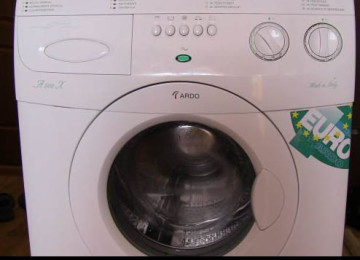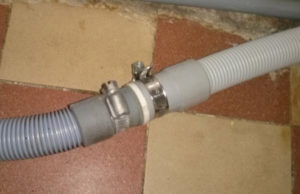 When purchasing a washing machine, people know in advance where it will be located. However, there are cases when it is necessary to change the location of this equipment. Most often this happens due to the remote location of communications. Therefore, this article will tell the reader how to install a washing machine drain hose extension.
When purchasing a washing machine, people know in advance where it will be located. However, there are cases when it is necessary to change the location of this equipment. Most often this happens due to the remote location of communications. Therefore, this article will tell the reader how to install a washing machine drain hose extension.
When is it necessary to extend the hose?
Most modern washing machines are equipped with drain elements whose length does not exceed 150 cm. According to manufacturers, this figure should be sufficient for normal operation of the device.
In practice, there are situations when it is necessary to increase the length of this component. This can be done in several ways.
Hose extension methods
A washing machine drain hose extension can be created using the following two methods. Each method has its own distinctive features.
At first glance, there is nothing complicated in this method, but in practice everything is completely different. The fact is that on many models of washing machines the hose is attached from the inside.
To dismantle the element you will have to remove the front panel. Not everyone will take on such work.In addition, unscrewing the panel will void the warranty provided by the seller. For this reason, experts do not recommend replacing the hose on new washing machines.
A more rational solution would be to lengthen the tube. First you need to decide on the length to which this component will be extended. It should be taken into account that the hose should not have very tense places. Therefore, it is recommended to leave a small reserve.
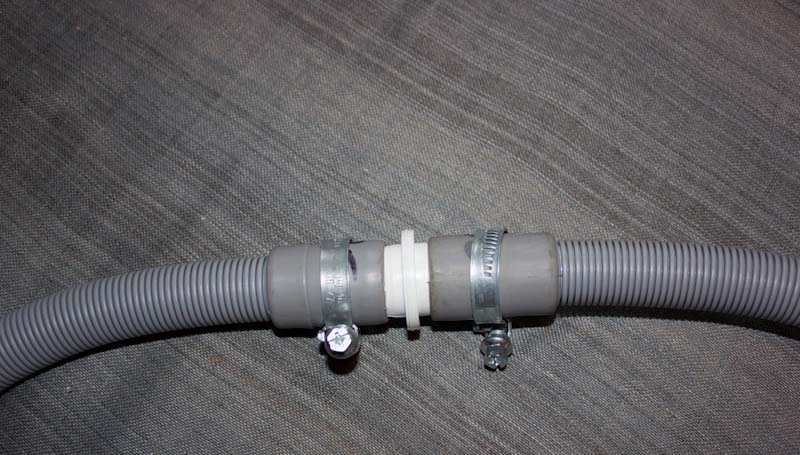
Many people, in an effort to avoid tight spots, purchase hoses of increased length. So they get a new problem. Excessive length creates a greater load on the drain type pump. He has to expend more power to pump water through a long tube. As a result, the part fails earlier.
It is worth adding that the drain tube must be protected from external influences. This component must be positioned so that no one can step on or accidentally damage it.
Types of drain tubes
This element is a tube empty from the inside, the main purpose of which is to remove waste liquid from washing machines. Water is removed using a special pump. The tube is mounted on one side to the machine, and on the other to the sewer.
There are two types of drain hoses on the market. The first is a coil-shaped pipe consisting of several modules. The length of each module is 50-55 cm. There are serifs at the ends that can be cut during installation.Thanks to this, you can easily select the most suitable length of the drain system.
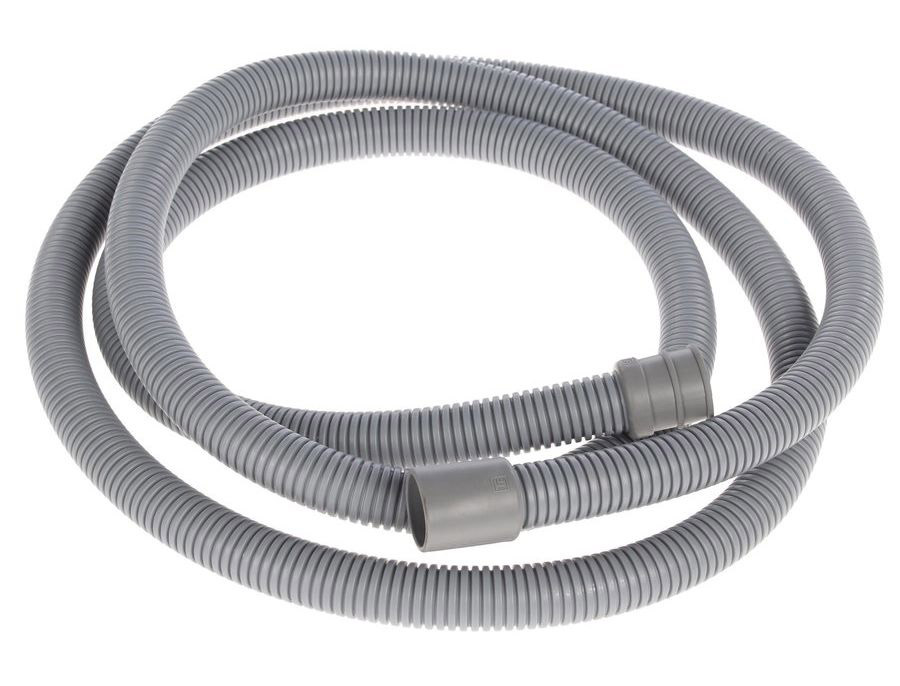
The second type is a telescopic hose. The industry produces it in compressed form. A hollow 50 centimeter pipe can be stretched to 200-250 cm. This allows you to save on storage and transportation of this product.
The main disadvantage of this option is the corrugated wave passing along the outside of the tube. During operation, it creates strong vibration. Also, care should be taken when installing such a hose.
Especially in situations where it is necessary to stretch the tube. Heavy load may cause surface damage, which will lead to system malfunction.
Materials used
To extend the drain system, you will need the following materials:

- Extension tube.
- Clamps.
- Screwdriver Set.
- Connecting elements.
Connecting elements for joining old and new tubes. This part is a plastic pipe, to the ends of which it is necessary to attach elements of the drain system.
Using clamps, the edges of the drain system are attached to the connecting element. It is worth noting that one drain tube may have ends of different diameters. Most often, the thin end is attached to the machine, and the thick end to the extension component. This must be taken into account when purchasing clamps.
Methods for organizing drainage
You can connect the drain element to the washing machine in one of the following ways:
- Using a special fixing component. The tube is attached to the edge of the bathtub or to the side of the sink.
- Attach the drainage system directly to the sewer siphon.
- Install an additional elbow to the drainage pipe.
Work progress
The extension process can be divided into several stages. First, you need to disconnect the machine from the electrical network and the water supply system. Next, the ends of the hoses are inserted into the connecting element. In this case, the edges should occupy half of the inner space of the tube.
The tube should rest tightly against the dividing element. This is the only way to protect yourself from water leakage.

After that, clamps are installed on the ends of the hoses. They need to be fixed with a screwdriver. In the case of plastic tips, fixation should be carried out as carefully as possible.
After tightening the clamps, you should check the tightness of the tube fixation. It should not fall out or move freely.
After tightening the clamps, it is necessary to connect the free end of the tube to the sewer, siphon or bathtub. In this case, it is necessary to ensure that the hose does not have twisted or kinked places.
The end of the drain system should not be in the water. Otherwise, additional resistance will be created, which will force the pump to increase its power. This will reduce the service life of this element.
It is necessary to mention that the drain hose should not be located at a height of 1 m, above the outlet fitting in the washing machine.If you place it above this level, it will create an additional load on the pump, which is extremely undesirable for this part.
Before you start using a machine with an extended hose, you need to do a test wash. This will help check the quality of the work performed and help avoid unnecessary problems in the future.






